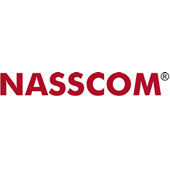Digital is not only creating new technology business opportunities but also transforming existing ones. The software testing industry has evolved and has transformed itself into a more robust and inclusive function, ready to deliver businesses of the future influenced by new ways of working, hitherto considered difficult. Last week, NASSCOM, in partnership with KPMG, released a PoV on the topic, titled “Software Testing: Trends Shaping the Industry”, which outlines shifts in the software testing industry since the pandemic, and acts as a follow up to NASSCOM’s 2019 software testing report.
The insights are based on discussions with experts from service integrators (SIs), global capability centres (GCCs) and product-based organisations on topics covering industry trends, business models, people, budget, methodologies, automation, technologies, tools and challenges.
Key Highlights:
- Industry trend: Accelerated digitalisation and its impact on IT advancement and software testing
- The pandemic accelerated digital transformation across organisations and those that adopted digital strategies earlier have done significantly well.
- According to GMInsights, while the Global test market exceeded USD 40 billion in 2020 and is estimated to grow between 7% to 12% CAGR until 2025, the market is estimated to add an incremental USD 34.5 billion for the period 2021 – 2025
- Testing tools: The debate continues – script-less and open-source over licensed tools
- With an ever-increasing demand for custom software solutions in support of digital transformation, it has sparked the emergence of testers outside of the traditional IT organisation and has influenced the rise in codeless testing tools.
- Such tools bridge the gap between non-technical and technical teams, and are being widely considered for adoption by many testing organisations.
- Test automation status: Progressively meeting expectations
- Generally, organisations seemed to have achieved 50% automation levels, while a few aim to achieve levels of 80% test automation.
- With most automation directed towards execution, organisations need to focus on process efficiency than just execution, such as requirements automation, test design automation, etc.
- People: Specialised strategy to manage business and demand fulfilment
- Demand for software testing resources is at an all-time high. However, there is shortage of skilled resources. There has been an incredible surge in demand for software test / quality resources in line with IT advancement.
- With IT companies willing to hire many more, there is scarcity of resources with the right skills. The demand is more for skilled testers than tenured testers.




